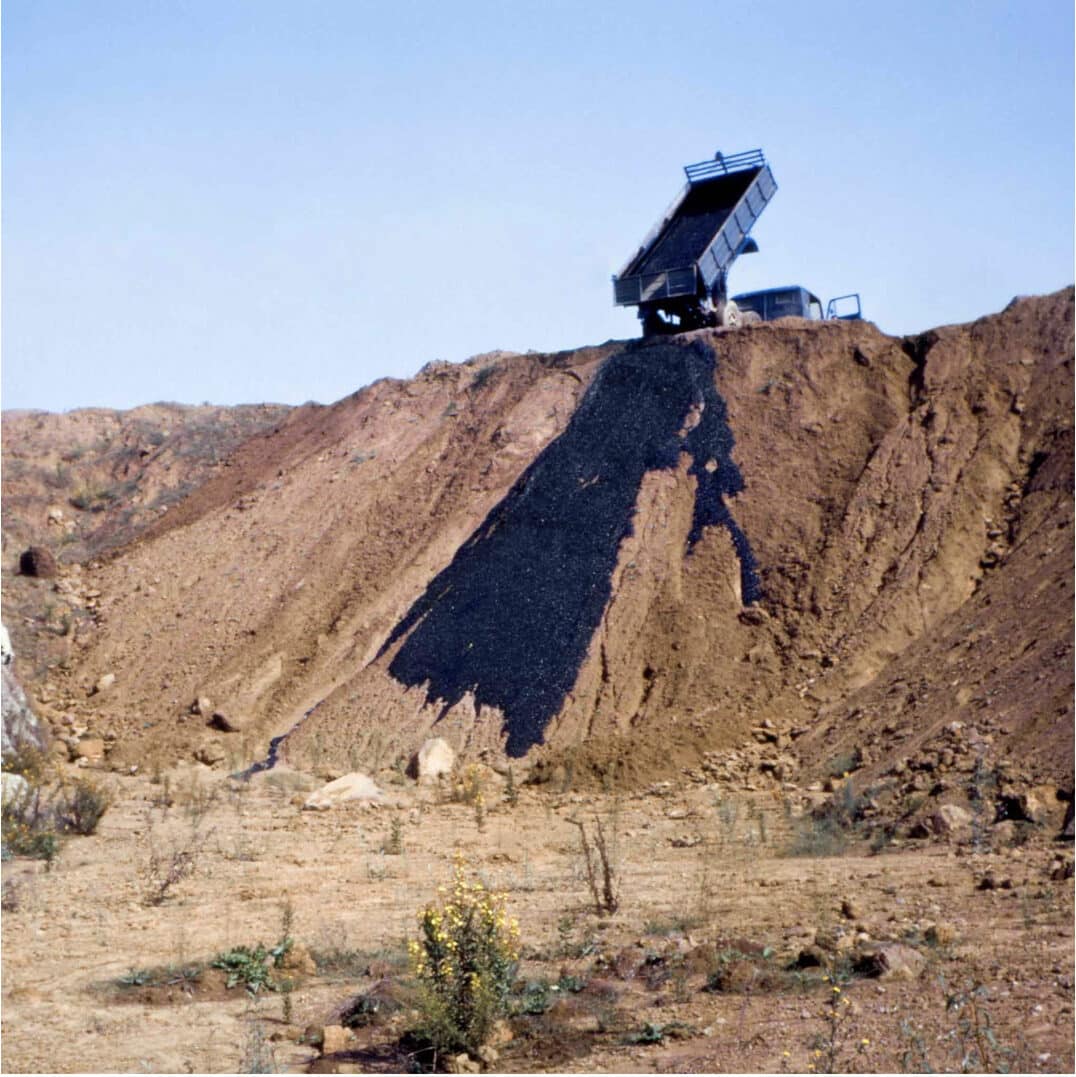DMJ – Asphalt Tales and the Ends of History

This paper explores how asphalt became a medium for architects and artists from the late 1950s to the 1970s to raise and articulate questions about memory, oblivion, communication and the environment. It questions to what extent T.J. Demos’ recent assertion that experimental visual culture is embedded ‘within social engagements and collaborative social movements that are posed against the Anthropocene’ [1] applies to the energy crisis of the 1970s, when many of the components of the current climate emergency were first made public, yet architecture failed to address these problems in any meaningful way. Setting aside the obvious entanglements between the profession and business, and the rapaciousness with which the oil industry has bought up and devoured patents for possible solutions such as the electric car, my larger claim is that architecture did not have the appropriate conceptual framework and language to articulate and communicate such existential problems. Here I explore tentative steps taken by architects and artists to frame such questions, through the ambiguities of the specific medium of asphalt, a material based on fossil fuel that paradoxically exemplified the speed of modernity alongside its geological proclivity to preservation, stickiness and toxicity. My article is based around five tales of artists and architects who, for different reasons, were drawn to asphalt as the means to express and situate their concerns, first against the background of the Holocaust and the atomic bombing of Japan, and then in relation to increasing awareness of limits to growth that the energy crisis had initiated. In each tale we can see how creative responses to the fluid materiality of asphalt allows for the framing of the questions that I have raised above. An early form of such engagement can be seen in the Polish architect Oskar Hansen’s winning competition entry of 1957 for a monument to the victims of fascism at Auschwitz, where the use of asphalt was intended to freeze and preserve elements along the road such as barracks, fencing and other structures, whereas, as Hansen wrote, ‘the process off the road would play the role of a biological clock’. [2] The Japanese photographer Shomei Tomatsu’s series of ‘Asphalt’ photographs, 1961, which stems from his close-up studies of the textures and scars of Nagasaki, reveals the sedimentation and entanglement of daily life as asphalt becomes, through his lens, the medium for the imprinting of refuse and debris. Robert Smithson’s ‘Asphalt Rundown’ (1969) and Ed Ruscha’s ‘Royal Road Test’ (1967), where a typewriter is thrown from a speeding car and bounces along a road, producing a destruction of meaning and legibility, demonstrate further examples of engagement with asphalt as environmental and cultural critique. And finally, SITE’s project ‘Ghost Parking Lot’ (1978), in which James Wines buried a row of asphalt-encased cars in a suburban mall car park, crystallises this critique of speed through the very medium that enables it.
- T.J. Demos, Against the Anthropocene. Visual Culture and Environment Today (Berlin: Sternberg, 2017), 99.
- Sabrina Tanovic, Designing Memory. The Architecture of Commemoration in Europe 1914 to the Present (Cambridge: Cambridge University Press, 2019), 51.
DMJournal–Architecture and Representation
No. 1: The Geological Imagination
ISSN 2753-5010 (Online)
ISBN 978-1-9161522-3-6
About the author
Nicholas Boyarsky, PhD, is an architect and teacher. He is a partner of the London-based studio Boyarsky Murphy Architects and Professor of Architecture at RMIT University, Melbourne, where he is a supervisor in practice-based PhD programmes based in Europe and Asia. He was a founding member of the Asian-based Urban Flashes network. Through his involvement in the development of the Alvin Boyarsky Archive he has facilitated and organised seminars, events, publications and the travelling exhibition ‘Drawing Ambience: Alvin Boyarsky and the Architectural Association’, curated by Jan Howard and Igor Marjanović.

